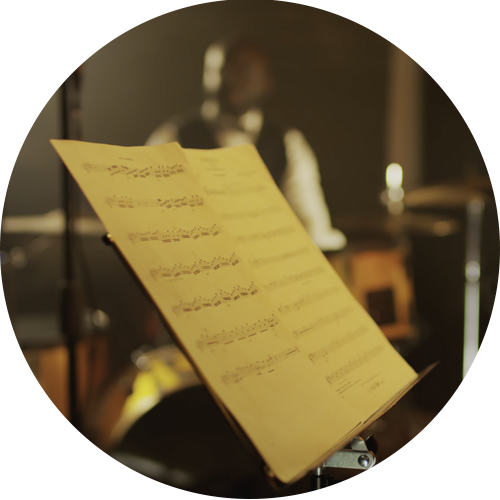Did you know that music and fragrances have a lot in common? This is not only due to the emotion and memories that a song or an aroma can provoke, but also because in perfumery and other fragrance creations, terms such as ‘note’, ‘harmony’, ‘chords’ and ‘tonality’ are used. This analogy is both poetic and practical, as these terms offer a structured framework for describing and understanding the complex characteristics of a fragrance, as the use of the language of music to describe fragrances relies on several conceptual and sensory similarities between music and the sense of smell.
Musical language in the description of aromas helps to understand the complexity and structure of a fragrance. It enriches the experience of the person doing the evaluation and provides a poetic and accessible way to communicate sensations and emotions that would otherwise be difficult to express in words.
Terms such as ‘structure’, ‘composition’, ‘harmony’, ‘notes’, ‘chords’ and ‘tones’, among others, help perfumers and fragrance enthusiasts to describe the aromatic experience in a richer and more detailed way. These provide a common language that facilitates communication about inherently abstract and subjective sensations.
Below is a small summary of some common terms related to music and fragrances, and how they are both intrinsically related, offering us a language with which to communicate and understand music and fragrance in detail.
STRUCTURE and COMPOSITION: Like a musical composition, fragrances are constructed in layers and sections that develop over time. In music there is the introduction, development and coda; in fragrances, we talk about top notes, heart and base notes. Top notes are the first aromas to be perceived, the heart notes form the core of the fragrance, and the base notes are the aromas that last and provide depth.
CHORDS: In music, a chord is a set of notes that sound harmonic when played together. Similarly, a fragrance can be described in terms of chords, which are combinations of different notes or raw materials that create a harmonious and balanced effect. The skill of the perfumer, like that of a composer, lies in knowing how to combine these elements to create a coherent and pleasant sensory experience.
HARMONY: This term is used to describe how different notes in a fragrance work together to create a pleasant and balanced scent. In music, harmony refers to the combination of notes that sound well together and, in perfumery, refers to the balance and complementarity between the different notes, which together create a cohesive olfactory impression.
NOTES and TONES: In both music and fragrances, the term ‘note’ is used to describe individual components. In music, a note represents a specific sound; in perfumery, it refers to a particular ingredient or specific aroma. These notes can be high, medium or low (tones), depending on their volatility and the time they take to be perceived.
TEMPORARY EXPERIENCE: The experience of listening to music and smelling a fragrance is inherently temporary. Both have an intense beginning, then develop and evolve over time. In music, time is essential for the development of rhythms and melodies; in perfumery, the evaporation of different notes over time creates a dynamic olfactory experience that changes and matures upon application.
EMOTIONS and FEELINGS: Both music and fragrances have a profound ability to evoke emotions and memories. Aromas, like sounds, can transport us to specific moments or places, evoking intense feelings and past experiences.
You can also find us on






